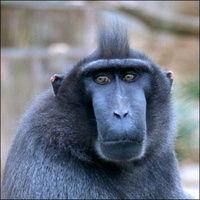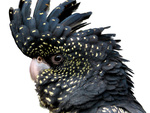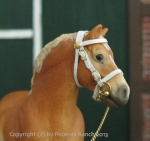| | Mathison Museum of Natural History |  |
|
+12landrover Kikimalou bmathison1972 Taos widukind Jill Duck-Anch-Amun lucky luke Caracal rogerpgvg Roger Bloodrayne 16 posters |
|
| Author | Message |
|---|
Kikimalou
Admin

Country/State : Lille, FRANCE
Age : 60
Joined : 2010-04-01
Posts : 21185
 |  Subject: Re: Mathison Museum of Natural History Subject: Re: Mathison Museum of Natural History  Wed Apr 10, 2024 11:47 am Wed Apr 10, 2024 11:47 am | |
| This bandicoot was sculpted by Jason, the founder and sculptor of Southern Replicas  |
|
  | |
lucky luke

Country/State : FRANCE Saint-Louis
Age : 62
Joined : 2010-07-17
Posts : 6298
 |  Subject: Re: Mathison Museum of Natural History Subject: Re: Mathison Museum of Natural History  Wed Apr 10, 2024 1:02 pm Wed Apr 10, 2024 1:02 pm | |
| |
|
  | |
bmathison1972

Country/State : Salt Lake City, UT
Age : 52
Joined : 2010-04-12
Posts : 6718
 |  Subject: Re: Mathison Museum of Natural History Subject: Re: Mathison Museum of Natural History  Thu Apr 11, 2024 5:08 am Thu Apr 11, 2024 5:08 am | |
| Species: Brachypelma smithi (Pickard-Cambridge, 1897) Common name(s): Mexican red-kneed tarantula About the Figure: Manufacturer: Safari Ltd. Series: Authentics Insects Year of Production: 1995 Size/Scale: Legspan approx. 8.0 cm. Body length (excluding appendages) approx. 3.0 cm for a scale of 1:1.7-1:2 for a female specimen Frequency of species in toy/figure form (at time of posting): Common Miscellaneous Notes: This is the fifth time we've seen B. smithi in the Museum. There is confusion to the identity of spiders referred to as Mexican red-knees, since the description of a cryptic sibling species, B. hamorii. In the absence of a figure being specifically ascribed to a given species, I am referring to all figures as the classic B. smithi. Both species are very common in the pet trade (and don't be surprised if the pet store doesn't know which species they are selling). About the Animal: Geographic distribution: Mexico; endemic to the southside of the Balsas River Basin in Guerrero Habitat: Tropical deciduous forests, thornscrub, semi-deserts Diet: Primarily insects and other arthropods, occasionally small reptiles, amphibians, birds, rodents. IUCN Status (at time of posting): Near Threatened Miscellaneous Notes: Brachypelma smithi belongs to a complex known as the 'red leg' species of Brachypelma, all of which occur along western Mexico. The other species and their distributions are: B. emilia (Pacific Coast side of Sierra Madre Occidental in Sonora, Sinaloa, Nayarit, and Jalisco), B. klaasi (Pacific Coast of Jalisco and small areas of Colima and Nayarit), B. hamorii (western slopes of Sierra Madre Occidental and Sierra Madre Sur in Colima, Jalisco, and Michoacán), B. baumgarterni (Sierra Madre del Sur region of Michoacán), B. auratum (neotransvolcanic belt of Estado de Mexico, Guerrero, Michoacán, and Jalisco), B. albiceps (Central Mexico in Morelos and parts of Puebla and Estado de Mexico to Guerro), and B. boehemi (Sierra de Cumbres of Guerrero). [You must be registered and logged in to see this image.] |
|
  | |
bmathison1972

Country/State : Salt Lake City, UT
Age : 52
Joined : 2010-04-12
Posts : 6718
 |  Subject: Re: Mathison Museum of Natural History Subject: Re: Mathison Museum of Natural History  Fri Apr 12, 2024 6:01 am Fri Apr 12, 2024 6:01 am | |
| Species: Felis catus Linnaeus, 1758 Common name(s): Exotic Shorthair About the Figure: Manufacturer: CollectA Series: Farm Time Year of Production: 2021 Size/Scale: Height at shoulders approximately 3.3 cm for a scale of 1:7.7-1:9.2 Frequency of breed in toy/figure form (at time of posting): Rare Miscellaneous Notes: The only other figure of this species I am aware of is by Play Visions in the late 1990s. Other figures exist by specialized artists and Japanese manufacturers, but they are often made of other materials (resin) or may be anthropomorphized. About the Animal: Geographic distribution: Breed originated in the United States and today is also bred in Europe and Asia Habitat: Human habitations Diet: Small mammals, reptiles, birds, insects; also specialized diets provided by human hosts IUCN Status (at time of posting): Domesticated Miscellaneous Notes: The Exotic Shorthair was created somewhat by accident in the 1950s by mixing Persians with American Shorthairs, and occasionally Burmese and Russian Blues. The goal was to create a breed that had the features of a Persian but with a shorter coat. In 1966, the Exotic Shorthair was formally recognized by the Cat Fancier's Association, but in 1987 the CFA closed the Exotic Shorthair to shorthair outcrosses, leaving the Persian as the only acceptable outcross breed. In 1986, the Fédération Internationale Féline recognized the breed. [You must be registered and logged in to see this image.] |
|
  | |
widukind

Country/State : Germany
Age : 48
Joined : 2010-12-30
Posts : 45777
 |  Subject: Re: Mathison Museum of Natural History Subject: Re: Mathison Museum of Natural History  Fri Apr 12, 2024 11:49 am Fri Apr 12, 2024 11:49 am | |
| |
|
  | |
bmathison1972

Country/State : Salt Lake City, UT
Age : 52
Joined : 2010-04-12
Posts : 6718
 |  Subject: Re: Mathison Museum of Natural History Subject: Re: Mathison Museum of Natural History  Sat Apr 13, 2024 6:14 am Sat Apr 13, 2024 6:14 am | |
| Species: Latrodectus mactans (Fabricius, 1775) Common name(s): southern black widow About the Figure: Manufacturer: Play Visions Series: Habitat Earth - Tarantulas and Spiders Year of Production: 1995 Size/Scale: Legspan approximately 6.0 cm. Body length 2.6 cm for a scale of 3.3:1-2:1 Frequency of species in toy/figure form (at time of posting): Common Miscellaneous Notes: This is the fifth time we've seen L. mactans in the Museum. It's a well-made figure for its size and the era in which it was produced; similarly-sized figures from the same era include those by K&M International (1997) and Club Earth (year unknown). All three are unique sculpts. About the Animal: Geographic distribution: Eastern and southeastern USA and the West Indies; naturalized in Hawaii. Habitat: Forests, fields, rodent burrows, disturbed areas, houses, gardens, garages, sheds. Diet: Small insects and other arthropods IUCN Status (at time of posting): Not Evaluated Miscellaneous Notes: Latrodectus mactans exhibits extreme sexual dimorphism. Females are large (avg. body length 0.8-1.3 cm), matte black, and have large, globose abdomens. Males are smaller (avg. body length 0.3-0.6 cm), more slender, more colorful, and have enlarged pedipalps. [You must be registered and logged in to see this image.] |
|
  | |
bmathison1972

Country/State : Salt Lake City, UT
Age : 52
Joined : 2010-04-12
Posts : 6718
 |  Subject: Re: Mathison Museum of Natural History Subject: Re: Mathison Museum of Natural History  Sun Apr 14, 2024 6:32 am Sun Apr 14, 2024 6:32 am | |
| Species: Pandinus imperator (Koch, 1842) Common name(s): emperor scorpion About the Figure: Manufacturer: Epoch Series: The Poison Year of Production: unknown Size/Scale: Body length approximately 7.0 cm for an average scale of 1:2.9 Frequency of species in toy/figure form (at time of posting): Common Miscellaneous Notes: This is the third time we've seen P. imperator in the Museum. Some assembly is required (and frankly, the final product doesn't hold together very well) and the scorpion sits loosely on its base. About the Animal: Geographic distribution: West Africa Habitat: Rainforest, tropical savanna Diet: Insects and other arthropods; occasionally small vertebrates IUCN Status (at time of posting): Not Evaluated Miscellaneous Notes: Pandinus imperator has a relatively mild sting. Several channel toxins have been isolated from the vemon of P. imperator, including Pi1, Pi2, Pi3, Pi4, and Pi7. It has been suggested there is an inverse relationship between the size of a scorpion's claws and the potency of its venom. Generally speaking, scorpions with large claws for subduing prey, such as P. imperator, do not need as strong of a venom, whereas scorpions with small and slender claws need a more potent venom for immobilizing prey. This isn't always the case, but is a general rule-of-thumb. [You must be registered and logged in to see this image.] |
|
  | |
widukind

Country/State : Germany
Age : 48
Joined : 2010-12-30
Posts : 45777
 |  Subject: Re: Mathison Museum of Natural History Subject: Re: Mathison Museum of Natural History  Sun Apr 14, 2024 11:22 am Sun Apr 14, 2024 11:22 am | |
| |
|
  | |
bmathison1972

Country/State : Salt Lake City, UT
Age : 52
Joined : 2010-04-12
Posts : 6718
 |  Subject: Re: Mathison Museum of Natural History Subject: Re: Mathison Museum of Natural History  Mon Apr 15, 2024 8:06 am Mon Apr 15, 2024 8:06 am | |
| Species: Echidna nebulosa (Ahl, 1789) Common name(s): snowflake moray; clouded moray; starry moray About the Figure: Manufacturer: Toys Spirits Series: Moray Eel Mascot Year of Production: 2024 Size/Scale: Body length approximately 10.0 cm for a scale of 1:5-1:10 Frequency of species in toy/figure form (at time of posting): Unique Miscellaneous Notes: This figure is very soft and squishy and can hence be easily manipulated to be placed in the sunken pot as shown here. The same sculpt was used for four other moray eel species in the set. Toys Spirits previously released another set of moray eels in 2020 that also appear use the same sculpt. About the Animal: Geographic distribution: Indo-Pacific (Red Sea and East Africa to Japan, Micronesia, Hawaii) and East Pacific (Baja California to Colombia) Habitat: Coral reefs, seagrass beds, intertidal reef flats, tide pools; at depths of 1-48 meters Diet: Crustaceans IUCN Status (at time of posting): Least Concern Miscellaneous Notes: Unlike many moray eels that have sharp teeth, Echidna nebulosa has blunt teeth, an adaptation for breaking the hard exoskeletons of their crustacean prey. [You must be registered and logged in to see this image.] |
|
  | |
widukind

Country/State : Germany
Age : 48
Joined : 2010-12-30
Posts : 45777
 |  Subject: Re: Mathison Museum of Natural History Subject: Re: Mathison Museum of Natural History  Mon Apr 15, 2024 10:13 am Mon Apr 15, 2024 10:13 am | |
| Another new moray eel specie. Great |
|
  | |
bmathison1972

Country/State : Salt Lake City, UT
Age : 52
Joined : 2010-04-12
Posts : 6718
 |  Subject: Re: Mathison Museum of Natural History Subject: Re: Mathison Museum of Natural History  Tue Apr 16, 2024 5:38 am Tue Apr 16, 2024 5:38 am | |
| Species: Gigantura chuni Brauer, 1901 Common name(s): Chun's telescopefish; gigantura About the Figure: Manufacturer: Kaiyodo Series: Deep Sea Animals MIU Series 2 Year of Production: 2001 Size/Scale: Bottlecap base 3.2 cm. Total figure length 5.7 cm. Standard body length (excluding caudal fin) approximately 3.8 cm for a scale of 1:4. Frequency of species in toy/figure form (at time of posting): Unique Miscellaneous Notes: The fish is removable from its base. Since only the genus is listed on the base, I am not sure if Kaiyodo intended this species or if it is just what is circulating online from posts of personal collections. There is a second species in the genus, G. indica. About the Animal: Geographic distribution: Circumtropical Habitat: Mesopelagic to bathypelagic; at depths of 500-3,000 meters Diet: Other fish IUCN Status (at time of posting): Least Concern Miscellaneous Notes: Members of the genus Gigantura are known for their tubular, large-lensed, telescoping eyes. They eyes allow for optimal binocular light collection, allowing them to see even the weakest bioluminescence of their prey. However, as a consequence, they lose lateral vision. [You must be registered and logged in to see this image.] |
|
  | |
widukind

Country/State : Germany
Age : 48
Joined : 2010-12-30
Posts : 45777
 |  Subject: Re: Mathison Museum of Natural History Subject: Re: Mathison Museum of Natural History  Tue Apr 16, 2024 10:05 am Tue Apr 16, 2024 10:05 am | |
| |
|
  | |
bmathison1972

Country/State : Salt Lake City, UT
Age : 52
Joined : 2010-04-12
Posts : 6718
 |  Subject: Re: Mathison Museum of Natural History Subject: Re: Mathison Museum of Natural History  Wed Apr 17, 2024 5:41 am Wed Apr 17, 2024 5:41 am | |
| Species: Attacus atlas (Linnaeus, 1758) Common names(s): Atlas moth About the Figure: Manufacturer: Ikimon Series: Science Techni Colour - Private Specimen of a Lepidopterist Acrylic Mascot 2 Year of Production: 2019 Size/Scale: Wingspan approximately 6.0 cm for a scale of 1:4 for a female specimen Frequency of species in toy/figure form (at time of posting): Rare Miscellaneous Notes: This is the third time we've seen A. atlas in the Museum. The figures in this series are essentially photographs of butterflies and moths embedded in acrylic. Flip the figure over and the underside reveals an image of the ventral side of the animal, too. They are also sold as keychains (hence the hole in the acrylic above the head). About the Organism: Geographic distribution: Central and East Asia, from India to Philippines, Indonesia, Japan Habitat: Tropical and subtropical primary rainforest, secondary forests, shrubland Diet: Larvae feed on a variety of plants, including Ailanthus (ailanthus), Cinnamomum (cinnamon), Citrus (citrus), Elettaria (cardamom), Litchi (lichi), and Magnifera (mango); adults do not feed. IUCN Status (at time of posting): Not Evaluated Miscellaneous Notes: Cocoons of A. atlas have been used for silk production, although not as widely or commonly as those of the domestic silkworm ( Bombyx mori). The silk of A. atlas is brown and in parts of Southeast Asia has been used to weave fagra silk. [You must be registered and logged in to see this image.] |
|
  | |
widukind

Country/State : Germany
Age : 48
Joined : 2010-12-30
Posts : 45777
 |  Subject: Re: Mathison Museum of Natural History Subject: Re: Mathison Museum of Natural History  Wed Apr 17, 2024 11:02 am Wed Apr 17, 2024 11:02 am | |
| |
|
  | |
bmathison1972

Country/State : Salt Lake City, UT
Age : 52
Joined : 2010-04-12
Posts : 6718
 |  Subject: Re: Mathison Museum of Natural History Subject: Re: Mathison Museum of Natural History  Thu Apr 18, 2024 5:51 am Thu Apr 18, 2024 5:51 am | |
| Species: Bos grunniens Linnaeus, 1766 Common name(s): domestic yak; yak About the Figure: Manufacturer: Schleich Series: Wild Life Asia and Australia Year of Production: 2010 Size/Scale: Height at withers (shoulders) approximately 8.0 cm for a scale of 1:13.9-1:17.3 for a male or 1:13.1-1:14.6 for a female (see below). Frequency of species in toy/figure form (at time of posting): Rare Miscellaneous Notes: While this figure was sold in Schleich's Wild Life line, the color better supports a domestic yak over a wild yak ( B. mutus; see below). The scale above includes both male and female data as the figure is not sexed and both male and female yaks can have horns of this length. About the Animal: Geographic distribution: Himalayan Plateau; exported to other regions including the United States, Canada, New Zealand, and parts of Europe Habitat: Alpine meadow, Alpine steppe, desert steppe Diet: Grazer on low-growing grasses, shrubs, forbs, cushion plants, lichens, mosses IUCN Status (at time of posting): Domesticated Miscellaneous Notes: The origins of yak are not well understood. It is believed B. mutus diverged from wild cattle ( B. primigenius) between one and five million years ago. The oldest evidence of domestication is from about 2,500 years ago. Differences in native terminology for yak in Tibetic- and Gyalrongic-speaking peoples suggest the yak may have been domesticated more than once. Some authorities consider the wild yak as a subspecies of the domestic yak, but in most cases the two are recognized as separate species. Yaks are extremely important for the peoples of the Tibetan Plateau, and are bred for meat, milk, blood, wool (for clothing and other textiles), dung (for fuel), and to work as beasts of burden. [You must be registered and logged in to see this image.] |
|
  | |
Shanti

Country/State : Germany
Age : 64
Joined : 2014-02-12
Posts : 1474
 |  Subject: Re: Mathison Museum of Natural History Subject: Re: Mathison Museum of Natural History  Thu Apr 18, 2024 8:10 am Thu Apr 18, 2024 8:10 am | |
| |
|
  | |
bmathison1972

Country/State : Salt Lake City, UT
Age : 52
Joined : 2010-04-12
Posts : 6718
 |  Subject: Re: Mathison Museum of Natural History Subject: Re: Mathison Museum of Natural History  Thu Apr 18, 2024 8:43 am Thu Apr 18, 2024 8:43 am | |
| - Shanti wrote:
- Nice looking Yak!
yes, it's an impressive model, and I think it looks better in-hand! I lucked out with a good paint job. |
|
  | |
Shanti

Country/State : Germany
Age : 64
Joined : 2014-02-12
Posts : 1474
 |  Subject: Re: Mathison Museum of Natural History Subject: Re: Mathison Museum of Natural History  Thu Apr 18, 2024 8:51 am Thu Apr 18, 2024 8:51 am | |
| |
|
  | |
Joliezac

Country/State : New Jersey, USA
Age : 22
Joined : 2021-04-26
Posts : 2437
 |  Subject: Re: Mathison Museum of Natural History Subject: Re: Mathison Museum of Natural History  Thu Apr 18, 2024 9:44 am Thu Apr 18, 2024 9:44 am | |
|
I love the Schleich yak. I also like that it is grey in contrast with Papo's brown one
_________________
Jolie
Animal Ark Website
Animal Figure Photography Website
|
|
  | |
bmathison1972

Country/State : Salt Lake City, UT
Age : 52
Joined : 2010-04-12
Posts : 6718
 |  Subject: Re: Mathison Museum of Natural History Subject: Re: Mathison Museum of Natural History  Thu Apr 18, 2024 10:10 am Thu Apr 18, 2024 10:10 am | |
| - Joliezac wrote:
I love the Schleich yak. I also like that it is grey in contrast with Papo's brown one I kinda want a brown one to represent the wild type, but I am very happy with this one! Papo and the old Lineol and Elastolin look like wild type (?) |
|
  | |
widukind

Country/State : Germany
Age : 48
Joined : 2010-12-30
Posts : 45777
 |  Subject: Re: Mathison Museum of Natural History Subject: Re: Mathison Museum of Natural History  Thu Apr 18, 2024 11:35 am Thu Apr 18, 2024 11:35 am | |
| |
|
  | |
bmathison1972

Country/State : Salt Lake City, UT
Age : 52
Joined : 2010-04-12
Posts : 6718
 |  Subject: Re: Mathison Museum of Natural History Subject: Re: Mathison Museum of Natural History  Fri Apr 19, 2024 6:03 am Fri Apr 19, 2024 6:03 am | |
| Species: Dryocampa rubicunda (Fabricius, 1793) Common name(s): rosy maple moth About the Figure: Manufacturer: Paleo-Creatures Series: Amazing Moths Year of Production: 2015 Size/Scale: Figure width approximately 6.0 cm. If spread like a specimen, wingspan would come to approximately 7.5 cm for a scale of 2.3:1-1.7:1 Frequency of species in toy/figure form (at time of posting): Unique Miscellaneous Notes: This figure was made by forum member Jetoar for the short-lived Amazing Moths line. About the Animal: Geographic distribution: Eastern North America Habitat: Temperate deciduous forests, suburban parks and gardens Diet: Larvae feed on Acer (maples), Platanus (sycamore), Fagus (beech), Quercus (oak); adults do not feed. IUCN Status (at time of posting): Not Evaluated Miscellaneous Notes: Dryocampa rubicunda is a member of the family Saturniidae, commonly called giant silk moths due to their large size. One of the largest is the Atlas moth, seen recently in the Museum! By contrast, D. rubicunda is second smallest member of the family Saturniidae; the only species that is smaller is the honey locust moth, Sphingicampa bicolor, which occurs in the Upper Midwestern United States. [You must be registered and logged in to see this image.] |
|
  | |
widukind

Country/State : Germany
Age : 48
Joined : 2010-12-30
Posts : 45777
 |  Subject: Re: Mathison Museum of Natural History Subject: Re: Mathison Museum of Natural History  Fri Apr 19, 2024 11:32 am Fri Apr 19, 2024 11:32 am | |
| |
|
  | |
bmathison1972

Country/State : Salt Lake City, UT
Age : 52
Joined : 2010-04-12
Posts : 6718
 |  Subject: Re: Mathison Museum of Natural History Subject: Re: Mathison Museum of Natural History  Sat Apr 20, 2024 7:51 am Sat Apr 20, 2024 7:51 am | |
| Species: Marpissa pulla (Karsch, 1879) Common name(s): four-layered jumping spider About the Figure: Manufacturer: Kaiyodo Series: Capsule Q Museum - Kumocolle! Japanese Spider Collection Year of Production: 2020 Size/Scale: Body length (excluding appendages) approximately 2.7 cm for a scale of 5.4:1-4.5:1 for a male specimen Frequency of species in toy/figure form (at time of posting): Unique Miscellaneous Notes: The figure was sold as a 'strap figure' but the cord was easily removable, leaving a tiny non-obtrusive hole. About the Animal: Geographic distribution: East Asia (Far East Russia, China, Taiwan, Korean Peninsula, Japan) Habitat: Montane riparian areas, meadows, wetlands, marshland; often among grasses, fallen leaves, or rocky fields near streams Diet: Small insects and spiders IUCN Status (at time of posting): Not Evaluated Miscellaneous Notes: I had difficulty researching information on the biology of this species. Several members of the genus Marpissa have flattened abdomens as a morphologic adaptation for dwelling under bark and rocks or in crevices. [You must be registered and logged in to see this image.] |
|
  | |
widukind

Country/State : Germany
Age : 48
Joined : 2010-12-30
Posts : 45777
 |  Subject: Re: Mathison Museum of Natural History Subject: Re: Mathison Museum of Natural History  Sat Apr 20, 2024 9:40 am Sat Apr 20, 2024 9:40 am | |
| |
|
  | |
Sponsored content
 |  Subject: Re: Mathison Museum of Natural History Subject: Re: Mathison Museum of Natural History  | |
| |
|
  | |
| | Mathison Museum of Natural History |  |
|
